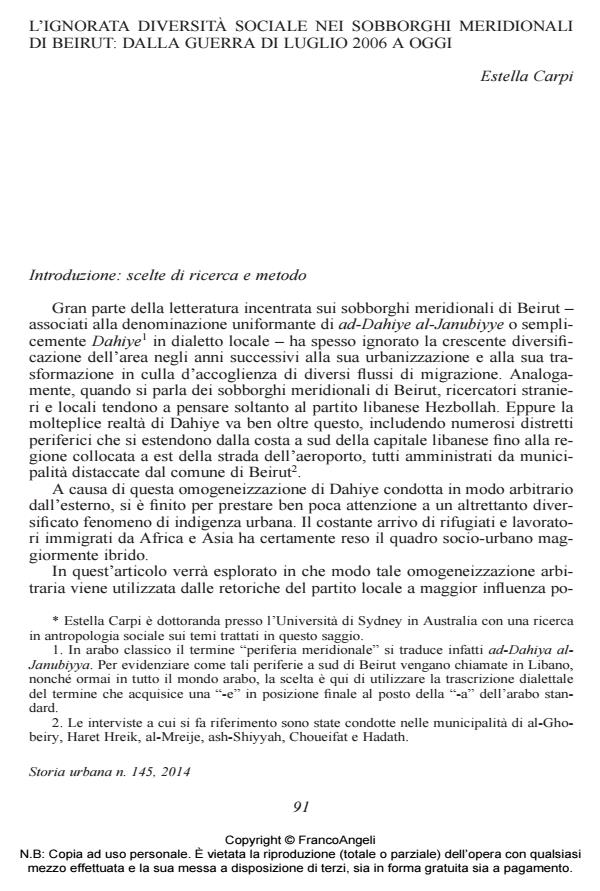The neglected social diversity in the southern suburbs of Beirut: from the War of July 2006 until today Beirut: 2006 war Dahiye Ethnic composition Political parties
Journal title STORIA URBANA
Author/s Estella Carpi
Publishing Year 2015 Issue 2014/145
Language Italian Pages 27 P. 91-117 File size 198 KB
DOI 10.3280/SU2015-145004
DOI is like a bar code for intellectual property: to have more infomation
click here
Below, you can see the article first page
If you want to buy this article in PDF format, you can do it, following the instructions to buy download credits

FrancoAngeli is member of Publishers International Linking Association, Inc (PILA), a not-for-profit association which run the CrossRef service enabling links to and from online scholarly content.
After tracing a genealogy of historical neglect of Beirut’s southern suburbs (Dahiye), long abandoned from the central state, the present paper aims at providing insights on the local administration of the political party Hezbollah that is said to have homogenously gentrified the districts, especially in the aftermath of the 2006 war. This study is informed by in-depth interviews and the author’s participant observation conducted from September 2011 to February 2013 with the chiefs of Dahiye’s municipalities and local residents. The attentive governance of Dahiye and the selective nature of its urban empowerment, gradually ended up obscuring the increasing demographic diversification of the territory and a consequent phenomenon of diversified vulnerability. The excluded groups that inhabit Dahiye are nowadays mostly formed by refugees, old date immigrants, Lebanese who lack political connections or, similarly, residents not directly hit by war. In addition, this paper engages with the idea of collective identity, used by local governors as a political strategy to maintain cohesiveness and consent, but which, as a matter of fact, does not reflect the empirical configuration of the variegated suburbs. In order to unearth the ignored differentiation of Dahiye’s vulnerability, the author attempts to voice local and refugee groups that witnessed the July War. The arbitrary process of external stereotypisation still tends to blur Dahiye’s diversity, thereby stunting a proper understanding of this social reality and overlooking new exclusion lines.
Estella Carpi, L’ignorata diversità sociale nei sobborghi meridionali di Beirut: dalla guerra di luglio 2006 a oggi in "STORIA URBANA " 145/2014, pp 91-117, DOI: 10.3280/SU2015-145004